An interview with Paul Kirchner
vendredi 20 novembre 2015 - Entretiens
Keep creating and hope something comes of it
In November 2015, Paul Kirchner is back with the bus 2, a collection of 48 new strips drawn between 2013 and 2015. In 2014, Stefan van Dinther and Eric van der Heijden interviewed Paul Kirchner for the Dutch magazine Zone 5300. The interview was conducted via email and Paul Kirchner copy-edited the transcript.
This interview is also available in French.
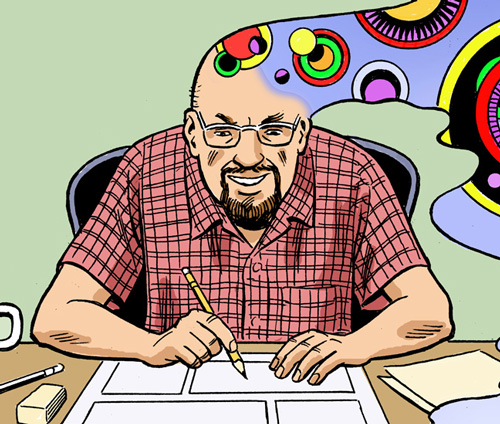
Zone 5300 : About your descent we read different things on the internet. Were you born in Germany or in New Haven, Connecticut ? Do you see the influence of your European descent in your work ?
Paul Kirchner : I was born in New Haven, Connecticut. I don't know how the other rumor got started. It was my great grandfather who was born in Germany.
Zone 5300 : Do you come from an artistic family?
P.K. : Yes, both my parents had artistic ability. My father was the "class artist" when he was in high school and enrolled in the Maryland Institute of Art after graduating. This was during the Depression, though, and he saw artists in the streets trying to sell paintings that were better than he could imagine doing himself, and they were asking almost nothing for them. He doubted his ability to make a living as an artist and became a doctor instead. My mother, who is French-Canadian, graduated from the School of Fine Arts in Montreal and worked as a medical illustrator before marrying my father.
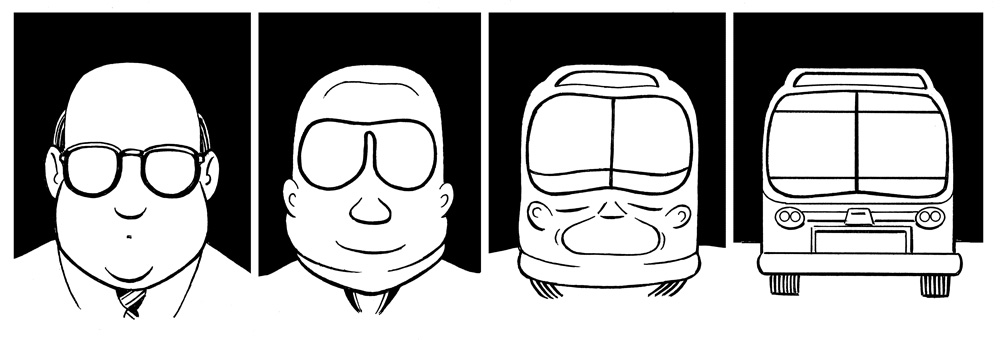
Zone 5300 : After a break of about 28 years you’re working on the bus again. Have you been collecting ideas for gags in the years between? Was it difficult to pick up where you left off?
P.K. : I hadn't been thinking of ideas at all; in fact, I had come to doubt my ability to come up with ideas of this sort. I thought that weird comics were perhaps the domain of the young, like rock music. In the mid-1980s I stopped doing the bus because I had become busy with commercial work, toy design, and advertising. In recent years, due to the downturn in the economy, my freelance work has slowed down to a worrying extent. In the 1970s and 1980s, when I didn't have an assignment, I would draw up cartoons and sell them to magazines such as Heavy Metal, High Times, and Screw. I always had that option. The magazine industry is not a good market anymore, but nevertheless I felt I should try to relaunch the bus and see if anyone would publish it [1]. I felt it had a chance. There was renewed interest after the publication of the Tanibis anthology and I was getting fan mail from all over the world. The artist’s ego is always hungry, so that is very gratifying. I wasn’t sure I could still do it, but once I began to focus on the bus again, with no other projects to think about, ideas began to come. As I did in the past, I began jotting down every odd idea that popped into my head, however strange. I keep the ideas in a file and look through it regularly, to see if any can be developed. Sometimes an idea that is insufficient on its own will work when you combine it with another idea. Best of all is when an idea appears in my mind fully realized, which happens now and then. Working on the new bus strips has improved my mood, which had been down due to the shortage of paying assignments. At least in drawing new bus strips I was accomplishing something. As an artist you have to keep creating and hope something comes of it.
Zone 5300 : Do you feel that the new episodes differ from the ones you’ve made for Heavy Metal ?
P.K. : Claude Amauger, the publisher at Tanibis, says he detects some new themes, but all-in-all he thinks they look as if I had hidden them away since the 1980s. I’ve tried to maintain a seamless connection to the earlier strips. Today’s buses no longer look the way they did 30 years ago, but I couldn’t bear to change the bus. The new ones are boxy and have no personality. You can hardly tell the front from the back. The main character, the Commuter, looks the same, but his look is one you still see and I have updated the way the other passengers dress and wear their hair. I remember the newspaper comic strips of my youth, where the characters all looked and dressed the same way they had when the strip originated, even if it was 30 or 40 years earlier. If you look up Bringing Up Father, Mutt and Jeff, or They’ll Do It Every Time you’ll see what I mean. The styles were stuck in a bygone age. I didn’t want to do that. One thing that has changed, and I hope it’s not noticeable, is that I used to work with a Gillot 170 pen and India ink on Strathmore 3-ply vellum paper. The quality of the paper is not nearly what it used to be, though, and I can no longer use the old-fashioned pen because the line bleeds terribly. I now ink with Faber-Castell’s “Pitt” artist pen with the superfine point. This has worked out well.
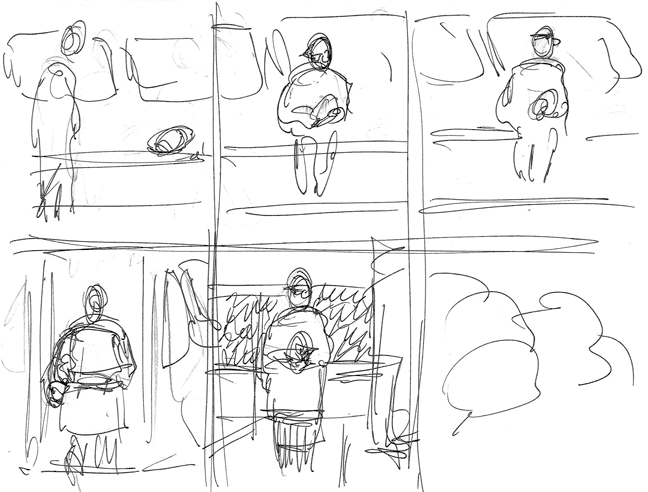
Zone 5300 : Do you see an artistic development within the episodes of the bus that you made for Heavy Metal ?
P.K. : The biggest difference in the look of the bus is between the first ten strips and those that came after. The first ten I did as samples for a weekly newspaper and expected them to be printed large, so I drew them twice-up—14” x 20”—and inked them with a fine line. When they appeared in Heavy Metal, they were reduced to about 35 percent, and the linework was too delicate. I continued to work at the same large size, but inked the art with a heavier line.
Zone 5300 : In The Comics Journal [2] interview you talked about being influenced by surrealistic art and cinema. Are there currently also comics that you use as an inspiration for the bus. Do you feel you’re still in touch with the developments within the comic business ?
P.K. : I’m out of touch with the comic industry these days. My daughter has introduced me to Neil Gaiman’s Sandman series from the 1990s, and I admire the stories and artwork. I was also very impressed with Frank Miller’s Sin City and 300, much more so than his Batman. I haven’t seen much else that really grabbed me, but then there is a lot I haven’t seen. After I relaunched the bus, I submitted it to High Times to see if they were interested. They didn’t choose to run it, but they did ask me to relaunch the Dope Rider character I did for them in the 1970s and to do a page a month. I've now been doing the strip monthly for over a year. They’re very excited about it and tell me they love its “vintage” look. Of course, as a vintage person, it’s the only way I know how to draw.
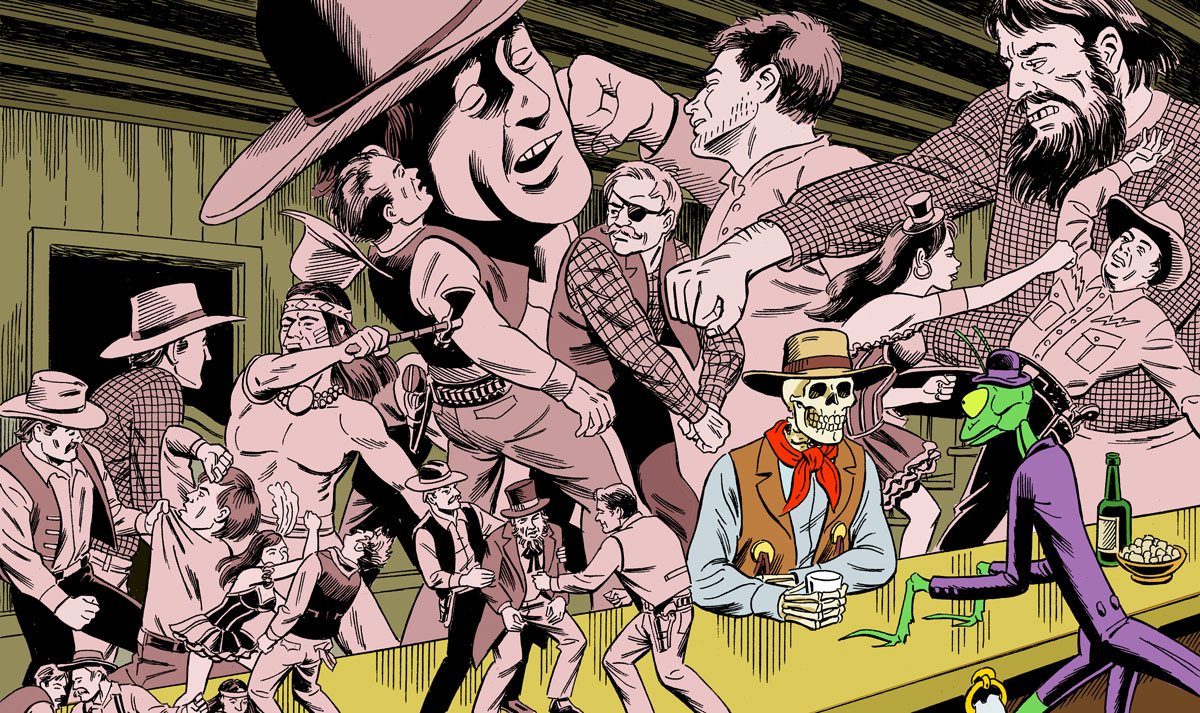
Zone 5300 : We are very curious to find out what your personal favorite episodes of the bus are and what you can tell us about these episodes.
P.K. : Looking through the strips, there are some in which I can easily understand where the idea came from. If I were starting the series over again from the beginning, I’m sure these same ideas would occur to me. There are other strips, though, that I look at and wonder, “Where did that idea come from? How could I have thought of that?” Those are my favorites. For example, the one where the bus stops at the edge of a broken bridge and the traffic behind it begins honking; the one where the bus driver is painting a bus and then it drives away, leaving blank space on which he begins painting a new one; the one where the bus poses for a photo spread in Playboy; the one where the man waiting for the bus is a cut-out that the driver replaces with a sitting man from a storage area of other cut-outs; the traffic cop directing buses coming from all directions, horizontal and vertical. I am also very excited about several of the new ones. I am pleased when they make my wife laugh out loud, as she is always willing to let me know when she thinks one isn’t working.

Zone 5300 : Do you have an explanation why at this moment your work is being re-appreciated?
P.K. : I attribute it mostly to the exquisite edition put out by Tanibis, which reproduced them at much higher quality than did Ballantine in the 1987 collection, and also the amount of attention the strips have gotten on the internet. The internet is a two-edged sword. On the one hand, it enables many people to see your work. On the other hand, it has made it more difficult to get paid for it. The internet audience expects to get everything for free. Cartoonists today put their work on the internet and hopes it leads to something, but meanwhile they must have another source of income. How great it was 30 or 40 years ago, when magazines still thrived, to be able to do cartoons and get paid for them!
Zone 5300 : In The Comics Journal interview you talked about being disappointed with Janwillem van de Wetering's scripting for Murder by Remote Control (for what it’s worth: when we read the book recently we didn't think the writing was too expository). You had hopes that his writing would take the book to a new level. In what way had you imagined that?
P.K. : At the time, I had hoped that there would be a deeper level to the story that would come out in the writing and I felt the text added little that couldn’t be understood from just looking at the artwork—that’s what I meant by expository. That was my initial impression, and one which I held onto afterward. However, I recently reread the story as it is going to be reprinted by Dover Publications in 2016, and, coming to it fresh, I found I liked the spare quality of the writing.
I was disappointed that the book didn’t make much of a splash and generated no royalties for me, only a modest advance that worked out to $12 a page. I felt I had invested a year in a project with very little to show for it. But the writing may have had nothing to do with that. You are rolling the dice on any creative endeavor. You never know how it will be received by the public.
On the positive side, I formed a lasting friendship with Janwillem, who was a fascinating person and who influenced my outlook in many ways. He is on the short list of truly remarkable people I have known. We corresponded regularly up to his death and my wife and I visited him at his place in Maine many times.
Zone 5300 : The visions of Jim Brady are very visual, the entire book is very visual. Did you make up the visions together with Janwillem, or was that just you?
P.K. : The visuals are mine, but that’s definitely the direction Janwillem wanted me to take, as it was my Dope Rider comic strip that inspired him to work with me. I still have his initial plot outline, which describes some visual ideas. At the top of it he wrote, “the idea, methinks, but you’re free to discard & improve, in fact I invite you to for your bubbles from the Subconscious are so much clearer than mine.”
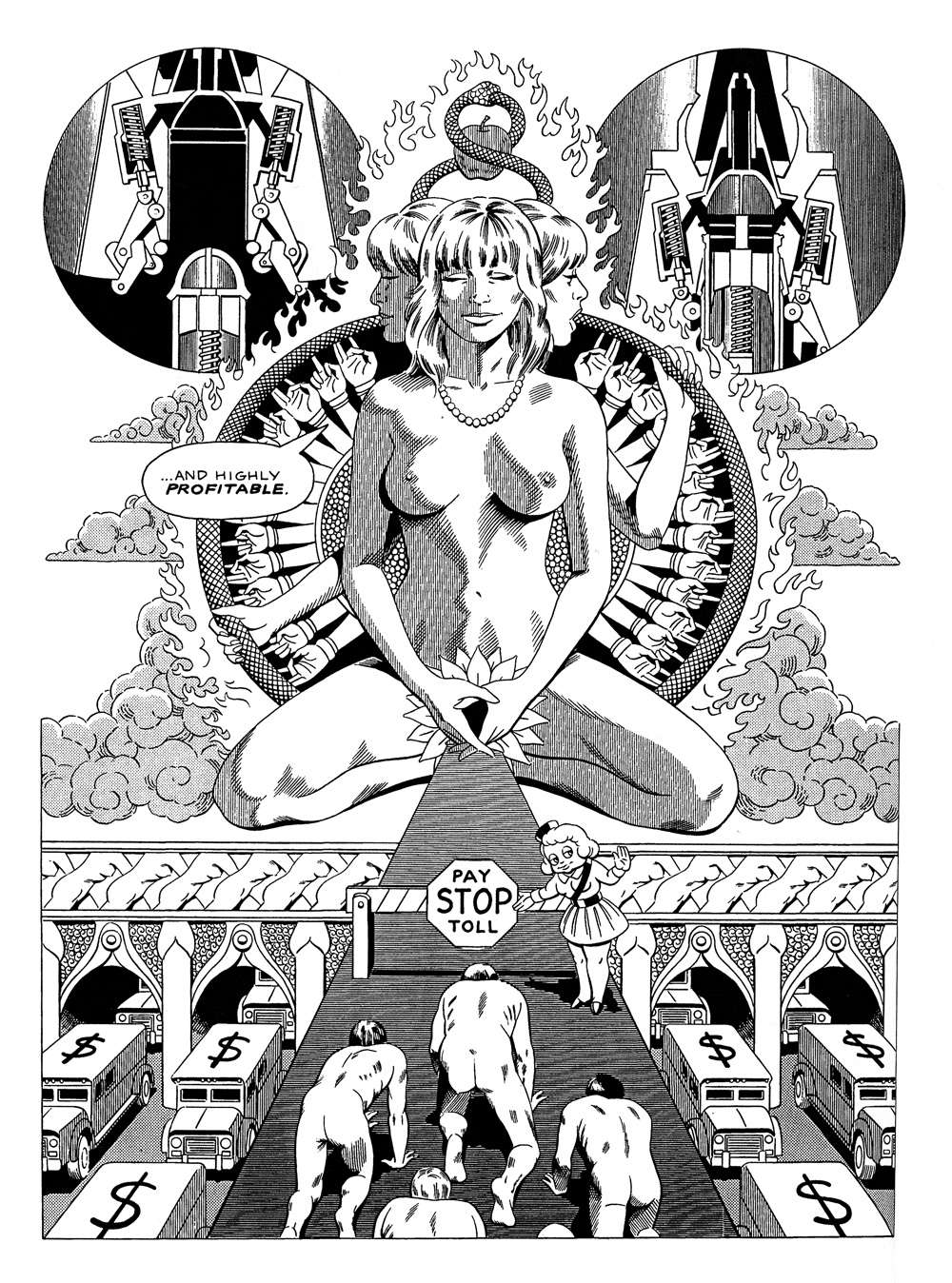
Zone 5300 : The changes from scene to scene are very fast and kind of sudden. Did you have a reason for this approach?
P.K. : In Dope Rider, I abruptly change situations to reflect fleeting thoughts or moods, and I applied that approach to Murder by Remote Control.
Zone 5300 : We are big Twin Peaks-fans and we see in Jim Brady a kind of precursor of Agent Cooper. Can you relate to that?
P.K. : I’m afraid I’ve never seen Twin Peaks. I don’t watch much television, even the good programs everyone talks about. I don’t mean to sound like I’m bragging about not watching television, it’s just that I’ve never gotten in the habit of it.
Zone 5300 : And do you have plans to breathe life into Jim Brady again?
P.K. : We had a lot of difficulty placing Murder by Remote Control with an American publisher. One said it was too European, not suitable for the American market. Another said it reminded him of Fritz the Cat, evidently the only non-superhero comic he was aware of. It was a relief when Ballantine finally gave us a contract. Once we had the deal, Janwillem immediately wanted to do a sequel and even sent me a plot outline. However, I couldn't work up the energy to plunge into such a big project again and anyway I had gotten busy with other things. Now, without Janwillem around to collaborate, I can't imagine doing it alone.
Zone 5300 : Do you consider the bus as your best work ?
P.K. : It’s the work I’m best known for, so the consensus may be that it’s my best work. As for me, I don’t look at it like that. I’ve done a lot of different sorts of work, some of it representing my more personal interests and some to meet commercial assignments. I find enjoyment and take satisfaction in all of it.
Zone 5300 : You changed from making comics to working for toy factories, but when one looks at the comics you drew, that doesn't seem like a very logical step. Can you explain this ?
P.K. : My association with toy companies started early, around 1980. An art director at a toy company saw a cover I did for Screw, liked the style of it, and wanted to meet me to talk about a project, a line of toy soldiers called the Eagle Force. I worked on that for over a year. After the company went bankrupt the people I had worked with went to other companies and continued to hire me for illustration, design, and copy writing. Eventually, all the companies I worked for went out of business and all the people I knew went in other directions, so that line of work ended for me.
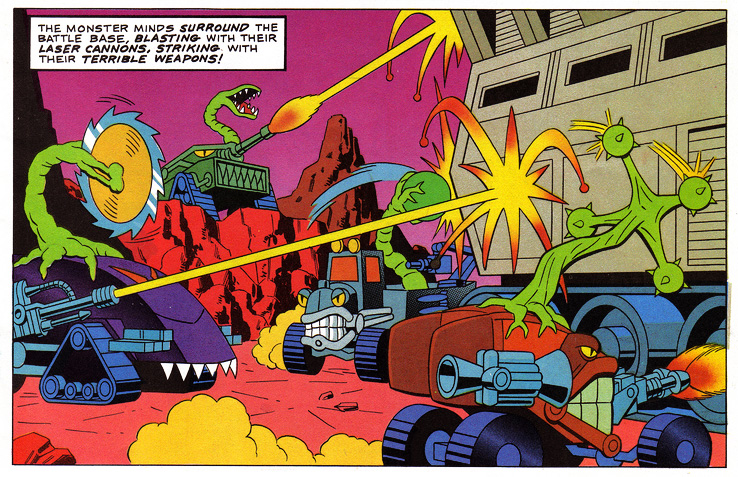
Zone 5300 : You have also written several non-fiction books, whereas also you said in The Comics Journal interview that you are not always satisfied with your writing for the bus. Is it harder for you to write fiction than non-fiction ?
P.K. : I don’t feel I have talent as a fiction writer—my writing is too expository, to use that word again. I can come up with story ideas but prefer that they have minimal copy. I find it easier to write non-fiction because I enjoy researching topics that interest me and presenting the material to the reader in a clear and interesting way.
Zone 5300 : You have the skills of an American comics professional, but we feel you have the heart of an autonomous artist, which feels like a bit of a split in your work. Can you relate to that ?
P.K. : I originally hoped to be a regular comic artist, working for Marvel or DC, but I didn’t seem to be suited for it. The most prestigious work in the comics field was drawing superheroes, and that didn’t interest me. The comics had to be drawn at a 150-percent enlargement, while I preferred working at 200 percent. My drawing was not as polished as it needed to be and I was too slow. Others could draw several pages a day, while it could take me several days to finish penciling a page. So I gravitated to doing my own art, but I always worked slowly and procrastinated over it. When I began to get commercial assignments, I found my work habits improved greatly. I had a specific task, the art directors provided feedback, the deadlines made me work efficiently, and the work paid well. When doing commercial assignments I have less angst and am not always kicking myself for my lack of productivity. This explains why I put my own projects aside when I began getting steady assignments. I understand that that doesn’t sound like the spirit of the true artist, but I had a family to support.
Notes
- [1] The new bus strips were finally published in various magazines in US (Tin House Magazine, Heavy Metal) and Europe (Zone 5300, Aaarg!, Focus Vif).
- [2] Paul Kirchner’s Apocalyptic Sensibility, interview by James Romberger.
Zone 5300 is Holland’s leading alternative comics magazine since 1994. The magazine appears four times a year in full color on glossy paper. It takes pride in presenting comic creators from all over the world to its readership.
Many thanks to Stefan van Dinther and Eric van der Heijden.
